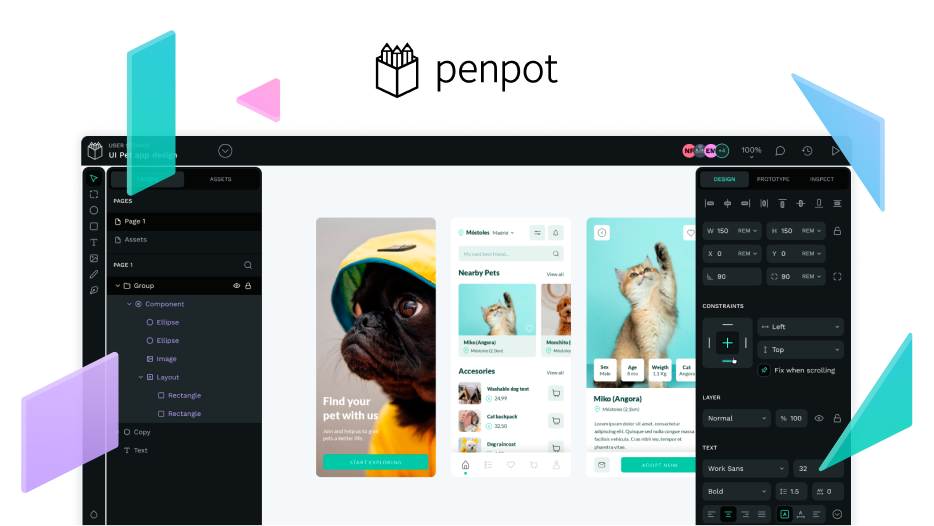Evidence speaks volumes: Penpot 2.0 marks a turning point for Penpot. Over 60,000 new users joined, marking the second most successful month in Penpot’s history, and a 35% increase in efficiency.
It’s the result of a lot of hard work behind the scenes and has enabled many exciting developments.
During last week’s “Penpot 2.0 Ins and Outs" live session, we showcased both powerful and requested features that are already developed and others currently in progress.
Did you miss it? ![]() Play it on YouTube.
Play it on YouTube.
Design Tokens in Penpot
We learned about the plan to introduce Design Tokens in Penpot with Mike Kamminga, CEO and co-founder of Hyma (Tokens Studio creators). He shared his plan of incorporating into Penpot all the strong features that Tokens Studio offers today including advanced logic operations, like Math operations, flexible teaming without restrictions, color modifiers.
The goal? Creating a meaningful experience for engineers similar to that of designers, with a focus on thinking big in terms of a multi-brand and multi-platform design system: “This involves, not only mobile and web, but also AR, VR, gaming, motion, etc.”
Watch Mike’s talk on design tokens in Penpot.
Importing files and templates from Figma to Penpot: the Figma Exporter
To facilitate the export of Figma files into Penpot we are proud to collaborate with Runroom.
Alejandro Sánchez, backend developer at Runroom, explained in detail how they are building a plugin that allows the user to export existing designs and have the incentive to try out Penpot with something that they’ve already designed.
It also enables the user to translate existing design systems but also templates and libraries built for Figma into Penpot. Nobody will get lost: The plugin to export Figma files includes a tutorial to guide you through.
Here’s Alejandro’s intervention on plugin to export Figma files into Penpot
Penpot Plugin System
What else is on the way? Penpot plugin system! To give us a taste of the reach of Penpot’s plugin system, @alotor showcased 5 plugins that will be available at Penpot: Contrast plugin, Lorem Ipsum, Icon Library, Table Creator, and the Color Palette Library. Jump straight to his demo!
Welcoming developers to the design process
To answer the question: What do the metrics reveal about Penpot 2.0? @diacritica noted the impressive rise in signups, suggesting a good balance between design and development.
This is a strong signal that we are welcoming developers the right way into the design tool and the design process, he explained.
He brought multiple resources to make the most out of Penpot 2.0, highlighting those to learn CSS Grid Layout as Penpot 2.0 outstanding feature.
When considering other metrics, such as the success of signups following the release of Penpot 2.0, Pablo raised a highly requested topic: integrating AI into Penpot. What about it? “We’ll maintain its open-source ethos and ensure that AI features are opt-in.”
Watch all the resources Pablo shared to make the most out of Penpot 2.0
How to contribute to Penpot: new local Communities
The community played a significant role in the development of Penpot 2.0 specially through their active participation in the CSS Grid Layout beta testing phase. @carolina.portugal gave kudos for all the contributions and reports while reminding everyone of all possible ways to contribute to Penpot such as create templates and libraries or code contributions on Github, among many others.
We’re passionate about involving our community by offering early access to upcoming features for feedback and testing before release. If you’d like to join these tests, stay tuned to our community space where we call for participation, Carol said.
She also announced an update for the community: “We’re starting to have Penpot local communities. If you’re interested, let me know!”
That’s just one of the many ways to get involved with Penpot. According to Carol, the first contribution starts with saying ‘hi’.




